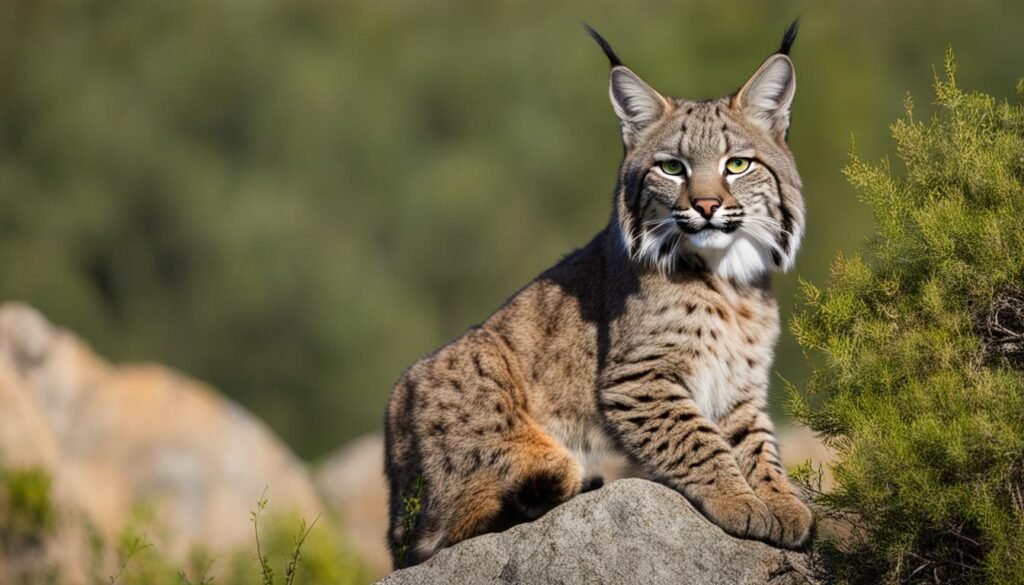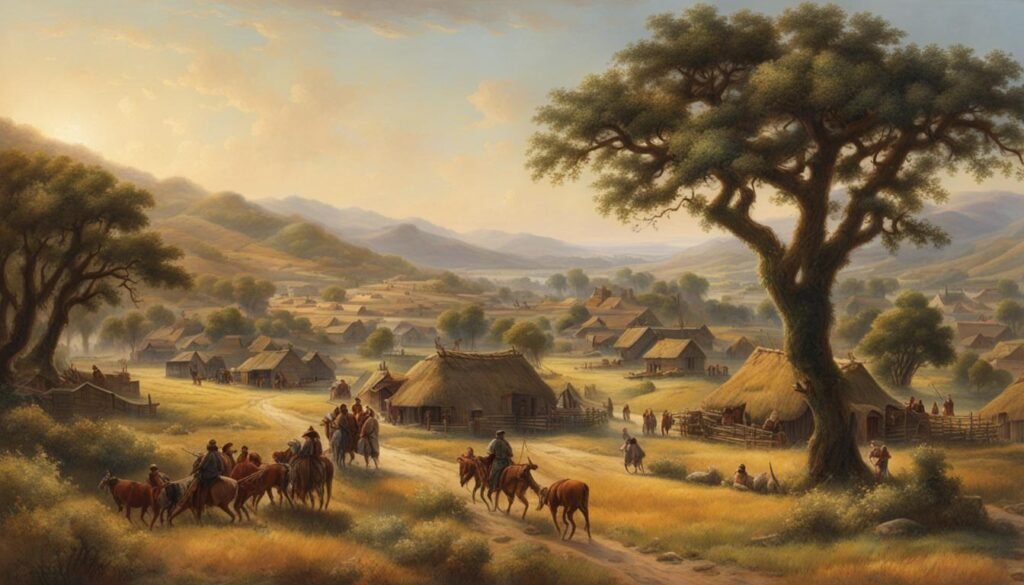Hello, my name is [Your Name] and I am a wildlife enthusiast based in California. Today, I want to share some fascinating insights about the bobcats found in our beautiful state. Bobcats, scientifically known as Lynx rufus, are small to medium-sized cats that can be spotted in various regions of California. They are truly remarkable creatures with their distinct appearance and elusive nature.
Bobcats can be found in both northern and southern California, from the rugged forests to the vast deserts. Their habitats range from woodlands and riparian areas to chaparral vegetation. With their round faces, pointed ears, and striking brown to light gray fur with spots and bars, bobcats are a sight to behold.
These amazing creatures play a vital role in maintaining the balance of our ecosystems. As apex predators, they help control the populations of rabbits, rodents, raccoons, and other small animals. It’s truly fascinating how they adapt to diverse environments and thrive in such a wide range of habitats.
Now, let’s delve deeper into the world of bobcats and explore their behavior, habitat, conservation status, and some tips for sightings. But before we dive in, take a moment to appreciate this stunning image of a bobcat in its natural habitat:
Key Takeaways:
- Bobcats, also known as Lynx rufus, are small to medium-sized cats found throughout California.
- They have distinctive markings and a short bobbed tail, with a round face and pointed ears.
- Bobcats primarily feed on rabbits, rodents, raccoons, and other small animals.
- They are solitary and elusive creatures, most active at night and during twilight hours.
- Bobcats can be found in diverse habitats throughout California, including chaparral vegetation, woodlands, forests, riparian areas, and deserts.
CA Bobcat Habitat and Behavior
Bobcats in California prefer habitats with dense brush cover. These areas provide them with the necessary cover and hunting opportunities. You can often find bobcats utilizing cavities in rocks, logs, and stumps for shelter and denning.
Being territorial creatures, bobcats require a specific amount of space to roam. Male bobcats typically need around three square miles of territory, while the females require about 1.5 square miles.
Bobcats are known for their elusive and solitary nature. They have adapted to avoid humans and are most active during the night and twilight hours. However, it is not uncommon to spot them during the daytime.
Although bobcats generally do not pose a threat to public safety, it is important to take precautions. They may attempt to hunt outdoor pets or small livestock if they are not securely enclosed at night.
Adapting to the Environment
- Bobcats have excellent adaptability skills, allowing them to survive in diverse habitats in California.
- They can be found in various environments such as chaparral vegetation, woodlands, forests, riparian areas, and deserts.
Behavior Patterns
- Bobcats are skilled hunters, primarily preying on rabbits, rodents, raccoons, and other small animals.
- They use their keen sense of hearing and sight to locate and stalk their prey.
- Bobcats are crepuscular animals, meaning they are most active during dawn and dusk.
- They mark their territory through scent markings and create scrapes with their hind paws.
Understanding the habitat and behavior of bobcats is crucial for coexistence. By respecting their space and taking necessary precautions, we can ensure the protection and conservation of these magnificent creatures in California.
Bobcat Conservation in California
The bobcat population in California is of great importance, and efforts are being made to protect these incredible creatures and their habitats. While the bobcat population in California is considered stable or increasing, it is crucial to remain vigilant in safeguarding their well-being. Invasive species, such as Burmese pythons, have led to a declining population in Florida, emphasizing the need for conservation measures.
The International Union for Conservation of Nature lists bobcats as a species of least concern, highlighting their important role in maintaining ecological balance. The California Department of Fish and Wildlife (CDFW) is actively involved in protecting bobcats and their habitats, recognizing the value they bring to the overall ecosystem.
To protect California bobcats, it is essential to focus on the conservation of their natural habitats. The CDFW emphasizes the importance of securing domestic pets and reducing conflict with bobcats and other wildlife. By ensuring pets are kept safely indoors and not left unsupervised, we can help minimize any potential threat to the bobcat population.
Bobcats play a vital role in controlling prey populations, which helps maintain the balance of ecosystems. Their presence contributes to the overall health and diversity of California’s wildlife. Ongoing research and monitoring, such as the Eastern Sierra Nevada Bobcat Study, provide valuable insights into the status and ecology of bobcats in California, aiding in informed conservation efforts.
By actively protecting the California bobcat population and their habitats, we can contribute to the lasting conservation of these magnificent creatures and ensure their survival for future generations.

CA Bobcat Sightings and Behavior Tips
Bobcats are fascinating creatures that are typically elusive and tend to avoid human interaction. However, it is still possible to spot them in the wild, especially in California, where bobcat sightings are relatively common. If you’re interested in observing these elusive creatures, here are some behavior tips to keep in mind:
- Timing is Key: The best time to see bobcats is during the early morning and late evening hours when they are most active. Bobcats are crepuscular animals, primarily active at dawn and dusk, so plan your outdoor excursions accordingly.
- Signs of Presence: Keep an eye out for signs of bobcat presence. Look for tracks, scat, and scrapes in areas where bobcats are known to inhabit. Bobcat tracks are typically double the size of a domestic cat’s and half the size of a mountain lion’s, with distinctive heel pad lobes.
- Marking Territory: Bobcats use scrapes to mark their territory. These scrapes are created with their hind paws and serve as a way of communicating with other bobcats. While observing a scrape, remember to maintain a safe distance and respect the bobcat’s space.
It’s important to remember that bobcats are wild animals and should not be approached or fed. These magnificent creatures should be appreciated from a distance, allowing them to roam freely in their natural habitats. By respecting their space and observing them responsibly, we can ensure the conservation of bobcats and their unique behaviors.

Observing bobcats in the wild can be a truly rewarding experience, providing valuable insights into their behavior and contributing to our understanding of these majestic creatures. Just remember to exercise caution and prioritize their welfare during your sightings.
Conclusion
The California bobcat, with its fascinating and elusive nature, plays a crucial role in maintaining the balance of ecosystems in California. Fortunately, the bobcat population in California is stable or even increasing. However, it is essential to continue our efforts in conserving their habitats and minimizing human-wildlife conflicts to ensure their long-term survival.
By understanding the behavior of bobcats and respecting their space, we can coexist harmoniously with these magnificent creatures. It is important to remember that bobcats are a natural part of California’s wildlife and should be observed from a distance. Appreciating their beauty and watching them in their natural habitat can be a rewarding experience.
Conservation initiatives focused on bobcats are crucial for the overall health of California’s ecosystems. By protecting their habitats and maintaining a healthy bobcat population, we can preserve biodiversity and sustain the delicate balance between predator and prey species.
Let us continue to work together to ensure the conservation of California bobcats for future generations. With our commitment to their well-being, we can maintain the beauty and diversity of California’s natural landscapes for years to come.
FAQ
Are there bobcats in California?
Yes, bobcats can be found throughout California.
Are there bobcats in Southern California?
Yes, bobcats can be found in both Northern and Southern California.
What is the size of a California bobcat?
Adult bobcats in California can weigh between 12 and 25 pounds.
Are California bobcats dangerous?
Bobcats generally do not pose a threat to public safety, but they may attempt to hunt outdoor pets or small livestock if not securely enclosed at night.
Where do California bobcats live?
Bobcats can be found in diverse habitats throughout California, including chaparral vegetation, woodlands, forests, riparian areas, and deserts.
What is the bobcat population in California?
The bobcat population in California is considered stable or increasing, except for a declining population in Florida.
How can we protect California bobcats?
The California Department of Fish and Wildlife works towards protecting bobcats and their habitats. It is important to secure domestic pets and reduce conflicts with bobcats and other wildlife.
When is the best time to see bobcats in California?
The best time to see bobcats is during the early morning and late evening hours when they are most active.
How can I identify bobcat tracks?
Bobcat tracks are usually double the size of a domestic cat’s and half the size of a mountain lion’s, with distinctive heel pad lobes.
Can I approach or feed bobcats?
No, bobcats are wild animals and should not be approached or fed. It is important to observe them from a safe distance.







